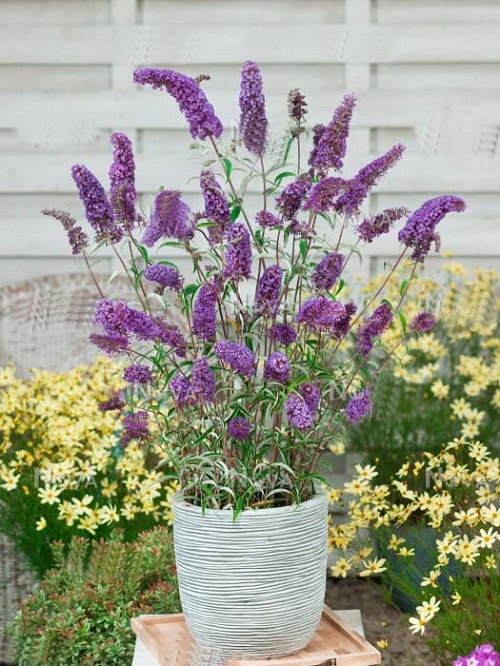One of the most striking colors, violet, makes quite a statement! These different Types of Violet Flowers are great for any garden!
Violet symbolizes purity, calmness, spirituality, and luxury. You can bring all these virtues to your home or garden by growing different Types of Violet Flowers in containers, garden borders, or flower beds!
Best Types of Violet Flowers
Some of the flowers on the list may not be exactly violet and may have hints of purple and blue to them.
1. May Night salvia
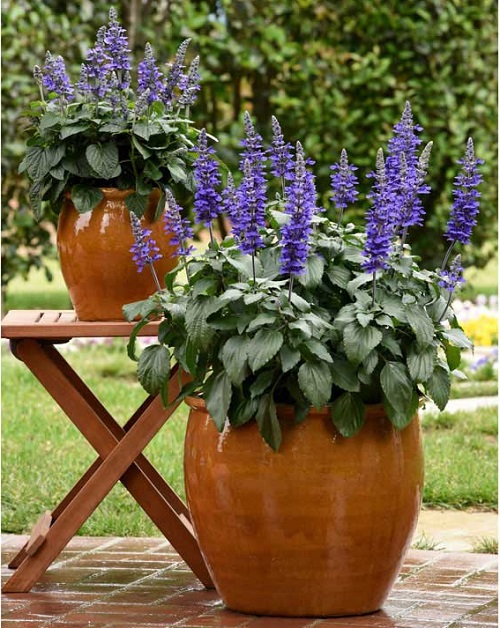
Botanical Name: Salvia sylvestris
USDA Zones: 4-8
May Night Salvia has violet-purple blooms on flower spikes that can grow up to 1-2 feet tall. It is a good choice for cottage gardens or perennial borders.
2. Spotted Dead Nettle
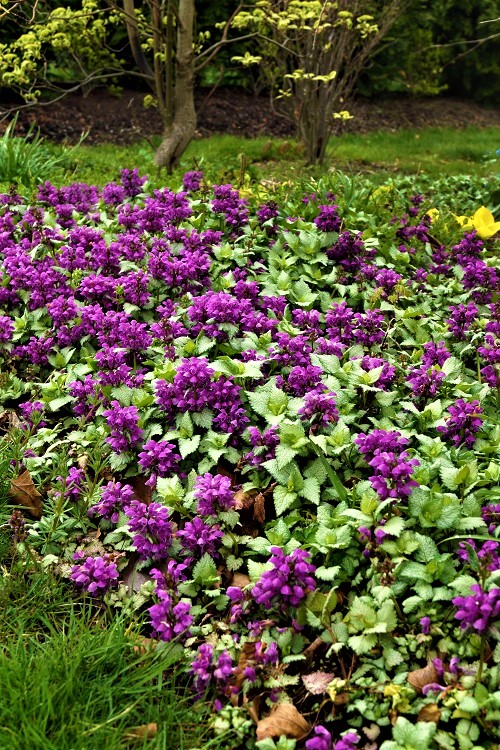
Botanical Name: Lamium maculatum
USDA Zones: 4-9
Dead nettle is famous as a ground cover and stands out with silvery foliage and violet blooms. Do remember that it cannot thrive well under foot traffic.
3. Mammoth Lavender Daisy Chrysanthemum
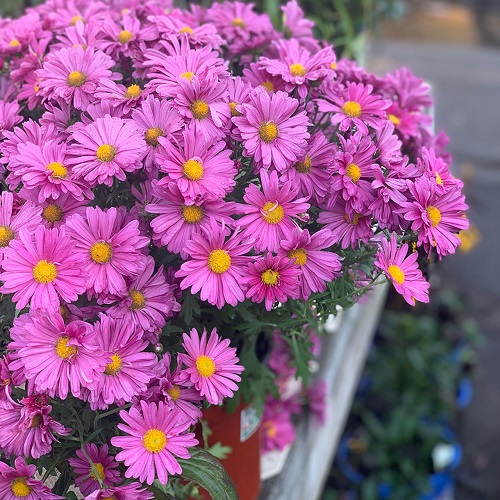
Botanical Name: Chrysanthemum’ Mammoth Lavender Daisy’
USDA Zones: 4-8
Mammoth is another gorgeous flowering plant that produces violet blooms that are 3-4 inches wide and grow on 6-8 inches tall stems.
4. Woodland Sage
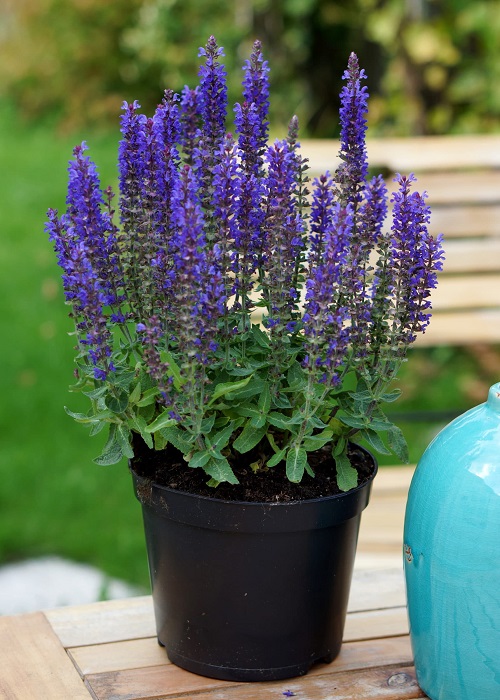
Botanical Name: Salvia nemorosa
USDA Zones: 4-8
Its flowers have a dark shade of violet and grow on a slender stalk. It has a more significant blooming season from June to September.
5. Seaside Daisy
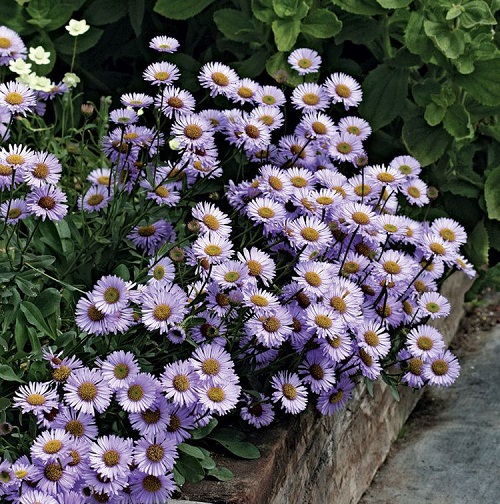
Botanical Name: Erigeron glaucus ‘Sea Breeze’
USDA Zones: 3-7
The tricolor dark violet and light blue blooms look as mesmerizing as the ocean, making it earn the name Ocean Breeze.
6. Petunia
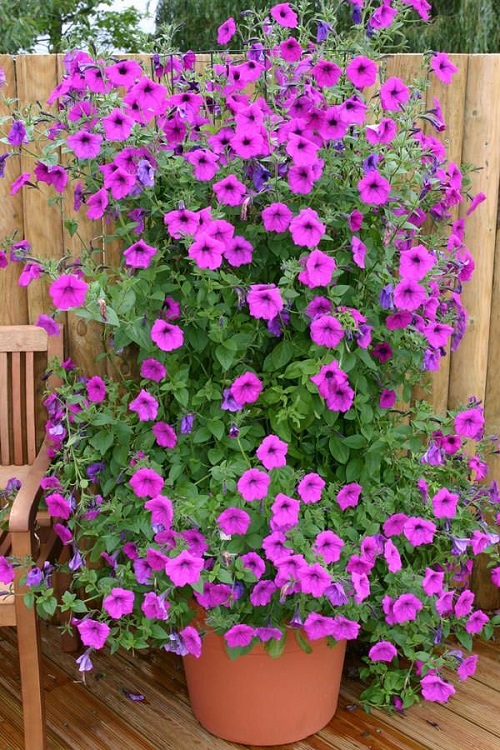
Botanical Name: Petunia
USDA Zones: 10-11
Petunia is most famous for its violet flowers. The petals come in double blooms, making them stand out from the rest. Keep it in bright light for the best growth.
7. Garden Lobelia
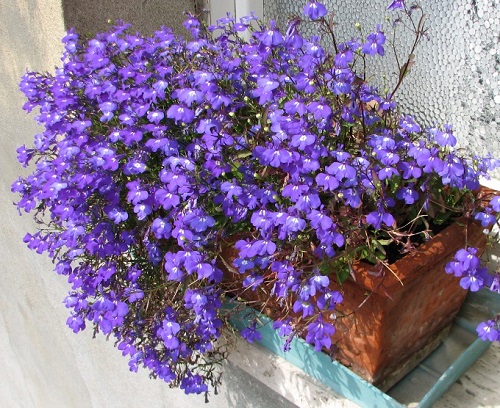
Botanical Name: Lobelia erinus
USDA Zones: 10-11
There are wide varieties of Lobelia, but the ones that produce trailing violet and blue flowers are usually the Lobelia erinus. It blooms from summer to the first frost.
8. Jackman’s Clematis
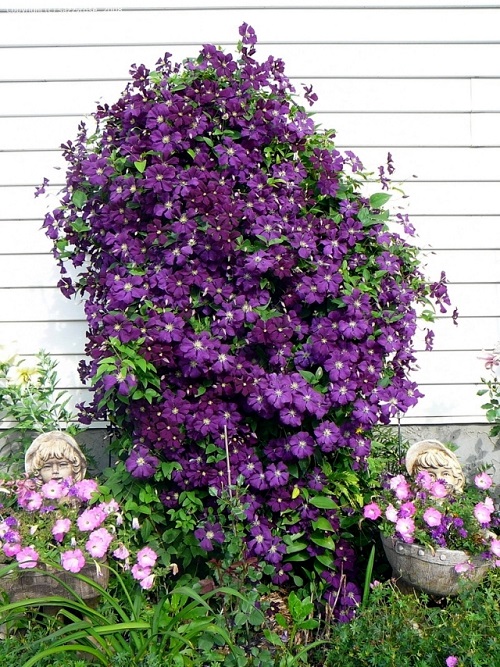
Botanical Name: Clematis’ Jackmanii’
USDA Zones: 4-11
This flowering vine showcases large, dark violet blooms in mid-summer with four velvety petals. It can best climb on arbors, fences, walls, and trellises.
9. Heliotrope
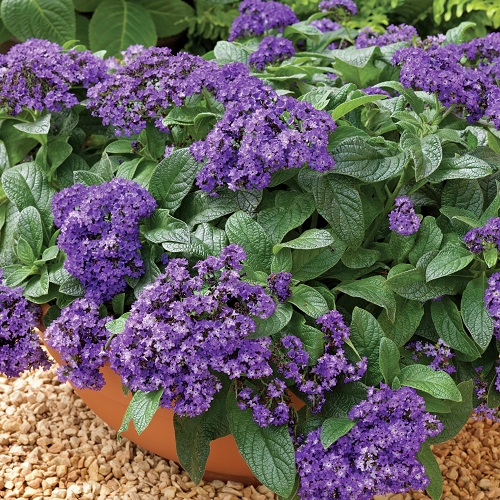
Botanical Name: Heliotropium
USDA Zones: 10-11
It is a shrub-like plant that produces clusters of fragrant violet flowers from summer to the first frost date. However, it is toxic, so keep it away from pets and children.
10. Morning Glory
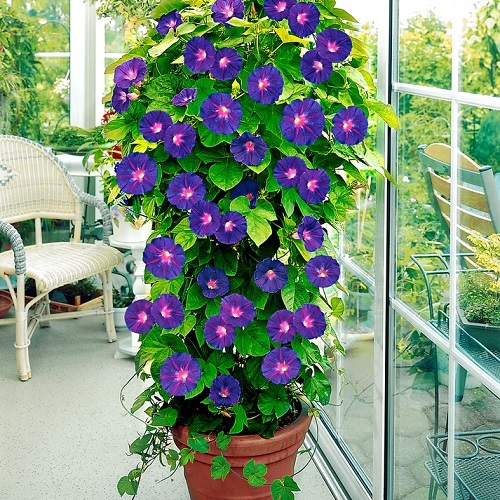
Botanical Name: Ipomoea purpurea
USDA Zones: 2-11
This annual, fast-growing vine is a hit among many gardeners because of its attractive violet flowers. It does best in bright sunlight.
11. Wisteria
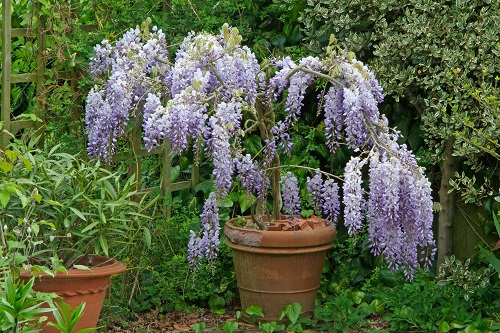
Botanical Name: Wisteria frutescens
USDA Zones: 5-9
Grow this woody vine with green foliage and violet, fragrant blooms anywhere in the garden. You can also train it on a fence, stake, or trellis.
12. African Violets
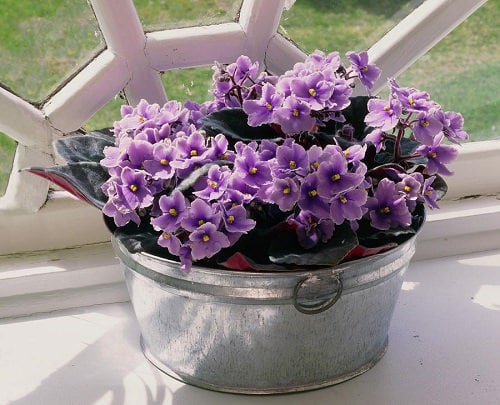
Botanical Name: Saintpaulia
USDA Zones: 10-12
African violets form a cluster of violet, white, or purple flowers in many shapes and sizes. They can be single or double, with ruffled or ringed petals. It prefers bright indirect sunlight and well-draining soil.
13. Verbena

Botanical Name: Verbena officinalis
USDA Zones: 6-10
Verbena produces a cluster of mauve-colored flowers all summer long. Its low height also makes for an excellent pot plant. Grow this beautiful variety in well-drained, moist soil.
14. Lavender
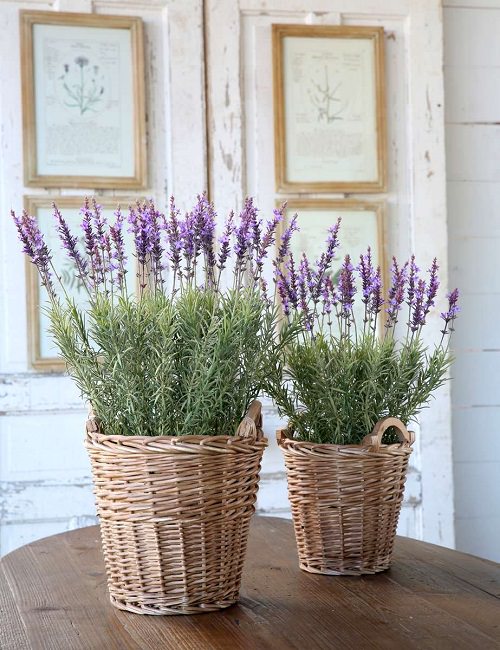
Botanical Name: Lavandula
USDA Zones: 5-9
The mind-blowing fragrance of lavender flowers is known for relieving stress. Lavender’s deep purple flowers are ideal for hedges and garden beds.
15. Clematis
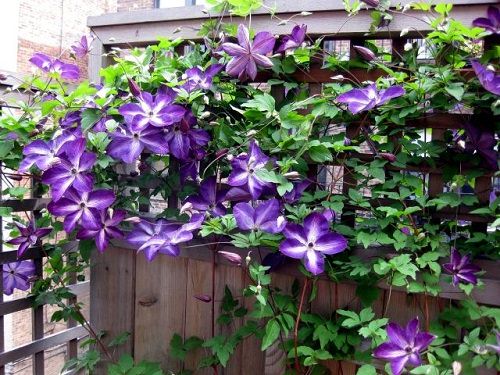
Botanical Name: Clematis ‘General Sikorski’
USDA Zones: 4-9
The hybrid varieties of clematis produce violet, purple, red, or bicolor flowers. ‘General Sikorski’ shows off dark lavender color flowers with a red tinge in the center.
16. Bellflower
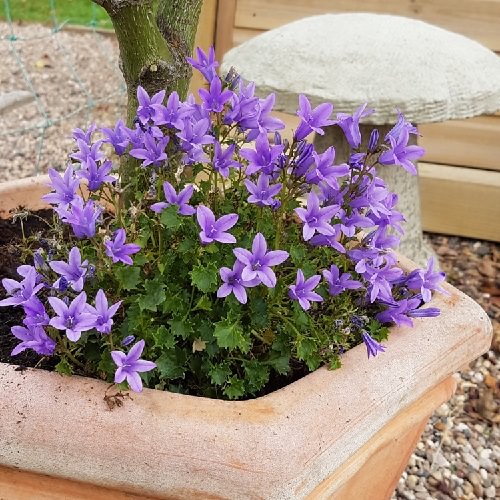
Botanical Name: Campanula rapunculoides
USDA Zones: 3-10
The small, bell-shaped violet flowers of this species are arranged beautifully on green stems. They enjoy both full sun and partial shade, with regular watering.
17. Iris

Botanical Name: Iris reticulata ‘Violet Beauty’
USDA Zones: 5-10
‘Violet Beauty’ has beautiful bright flowers on an upright plant. It works well in full sun. The plant is ideal for growing on the edges and in the spring garden.
18. Catmint
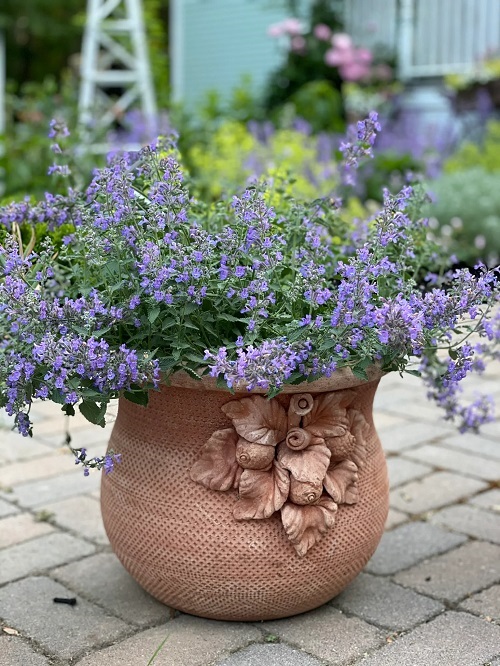
Botanical Name: Nepeta ‘Aroma Violet’
USDA Zones: 4-8
Disease, drought, and heat-resistant catmint is ideal for ground cover. It produces violet flowers with fragrant foliage. This herb thrives in full sun with regular watering.
19. Balloon Flower
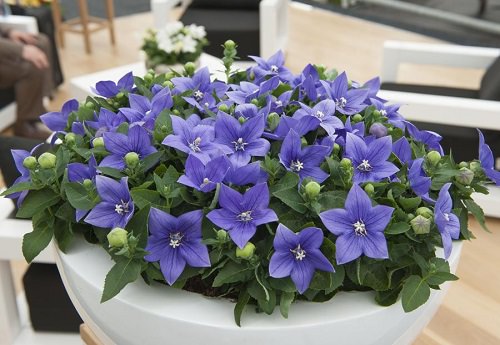
Botanical Name: Platycodon grandiflorus
USDA Zones: 3-8
Star-shaped, violet flowers have dark blue veins running on each petal. Balloon-like buds blossom throughout summer. It does well in full sun or partial shade.
20. Salvia
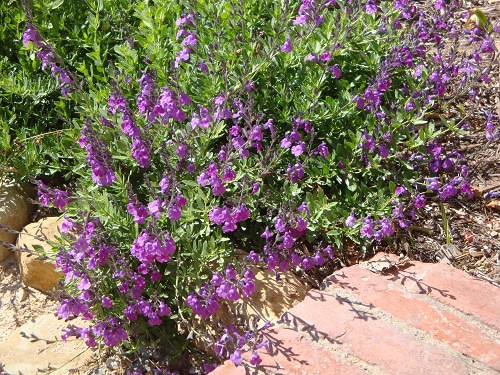
Botanical Name: Salvia lycioides X greggii ‘Ultra Violet’
USDA Zones: 4-9
This beautiful, eye-catching variety showcases bright violet flowers on upright stems with dark green foliage from mid-summer to frost. Best for flower beds or borders.
21. Pasque Flower
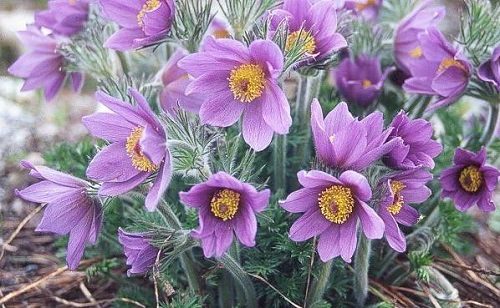
Botanical Name: Pulsatilla vulgaris
USDA Zones: 5-9
This ornamental spring-flowering variety features purple-violet, crocus-like flowers. It grows best in fertile, well-drained soil under full sun.
22. Columbine

Botanical Name: Aquilegia
USDA Zones: 3-9
With delicate violet flowers, Columbine blooms in April and May. It looks best in rock gardens and cottage gardens.
23. Candle Larkspur
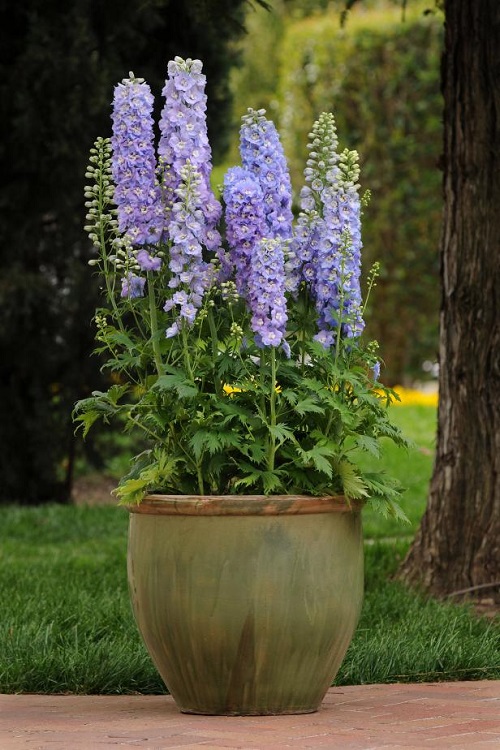
Botanical Name: Delphinium’ Black Knight’
USDA Zones: 3-7
You can spot this plant in cottage gardens, but it can also look attractive anywhere with its dark violet flowers. Make sure it gets plenty of light.
24. Purple Ice Plant
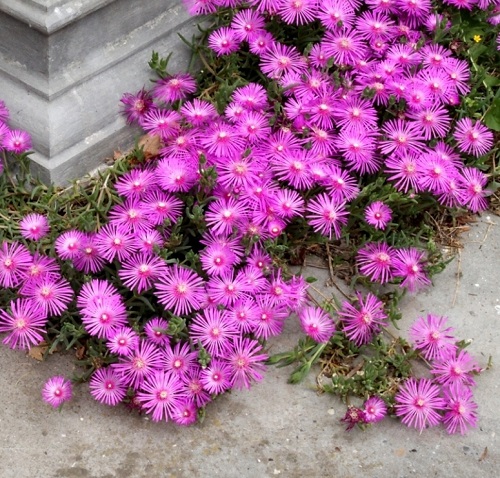
Botanical Name: Delosperma cooperi
USDA Zones: 6-11
With fine violet petals, the Purple Ice plant blooms from summer to fall. It can be an amazing addition to the sides of the garden, where it can spread beautifully.
25. Pacific Rhododendron
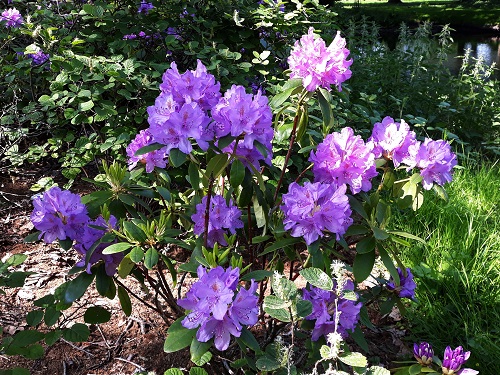
Botanical Name: Rhododendron macrophyllum
USDA Zones: 4-8
These shrubs can grow tall and feature bell-like, ornamental, violet flowers in spring and summer on evergreen foliage.
26. Butterfly Bush
Botanical Name: Buddleja davidii
USDA Zones: 5-9
With arching branches, this deciduous shrub showcases bright violet flower spikes throughout summer. Butterflies, bees, and other pollinators find this plant very attractive.
27. Purple Bougainvillea
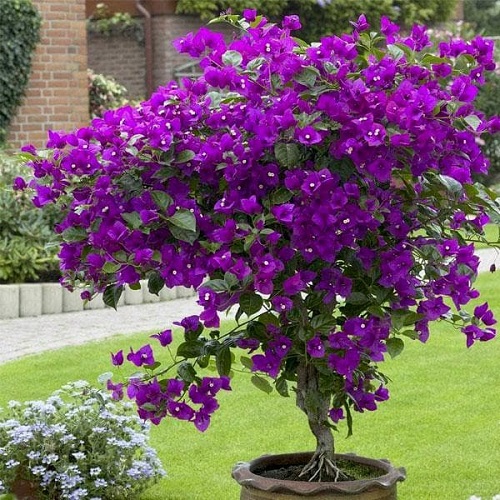
Botanical Name: Bougainvillea
USDA Zones: 9-11
With lovely violet flowers, this tropical vine can look striking over your garden fence, wall, or trellis. Keep it in bright light for the best growth.
28. Midnight Blue Rose
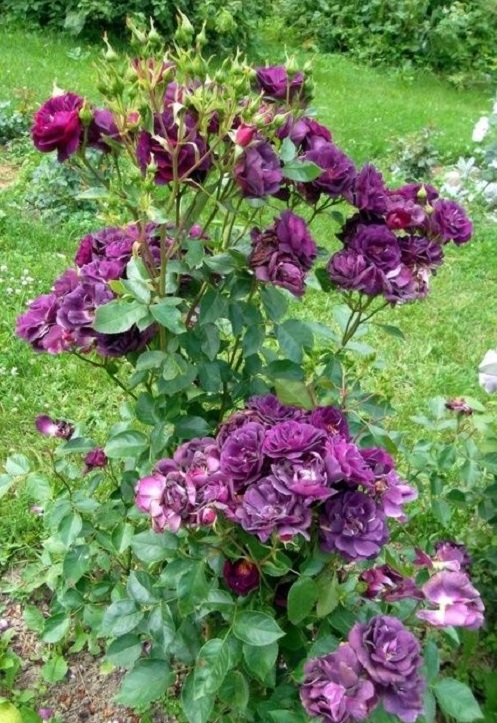
Botanical Name: Rosa ‘Midnight Blue’
USDA Zones: 5-9
It is a beautiful variety with deep violet flowers that usually stretch around 2-4 inches. It flowers from spring to autumn.
29. Rhapsody in Blue Rose
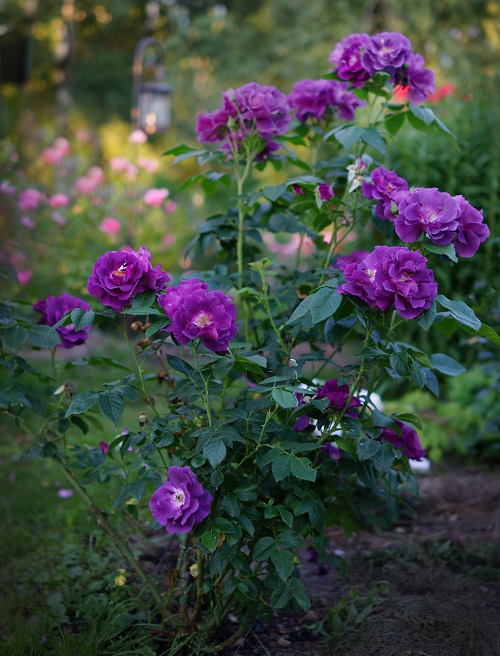
Botanical Name: Rosa’s Rhapsody in Blue
USDA Zones: 5-9
You can also choose this gorgeous cultivar with violet flowers that can stretch around 2-3 inches across. It appears from spring to fall and fades into a mauve-grey color.
30. Blue Beard
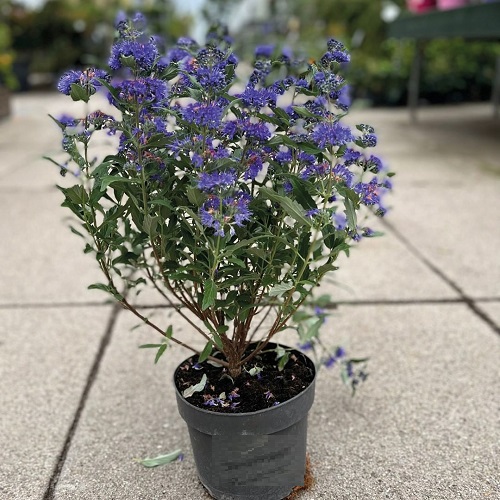
Botanical Name: Caryopteris × clandonensis
USDA Zones: 5-9
Blue Beard is also called the Blue Mist Spirea and Blue Spirea. This small shrub has a mounding growth habit with violet blooms that looks like clouds of purple mist on the plant.
31. Heather
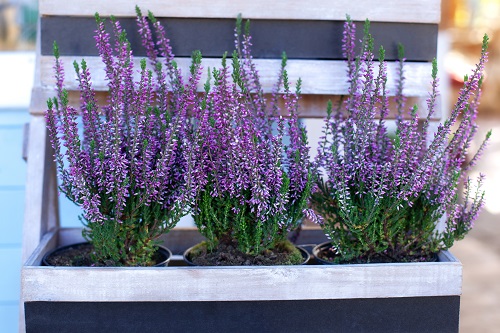
Botanical Name: Calluna spp.
USDA Zones: 4-6
Many species of Heather produce delicate violet flowers along long stalks from summer to autumn. It is best for slopes and rock gardens. It is one of the best types of violet flowers.
32. Allium

Botanical Name: Allium stipitatum ‘Violet Beauty’
USDA Zones: 3-9
The Allium ‘Violet Beauty’ flowers in late spring to early summer produce fragrant flowers in a violet shade. It thrives in full sun to part shade in well-draining soil.
33. Bush Clock
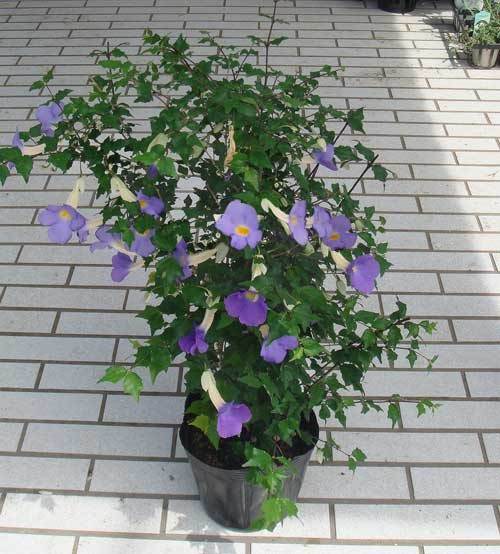
Botanical Name: Thunbergia erecta
USDA Zones: 10-12
With fragrant and beautiful violet-purple flowers, this plant is a must-have for hedges and borders. It performs well in partial shade and is relatively safe from pests.
34. Pansy
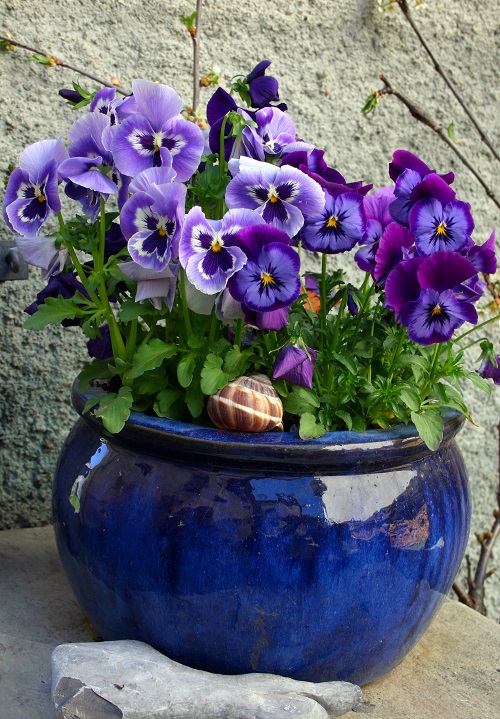
Botanical Name: Viola x wittrockiana
USDA Zones: 5-7
It is a hybrid variety that any pansy lover admires, and you can find these huge flowers almost 1.5-2 inches in width,
35. Wolf’s Bane
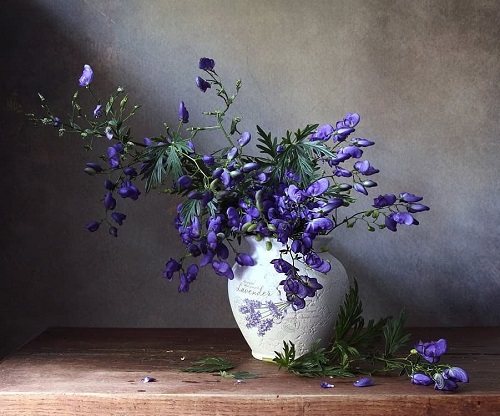
Botanical Name: Aconitum
USDA Zones: 3-7
The flowering plant derives its name from the fact that the flower resembles a monk’s habit. Grow in partial shade and well-draining soil.
36. Wild Indigo
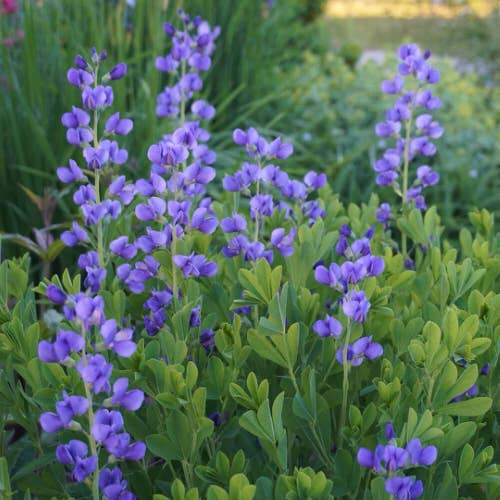
Botanical Name: Baptisia australis
USDA Zones: 3-19
You can choose to plant these extremely easy-to-grow flowers that look like purple spikes! It is best to plant Wild Indigo plants in full sunlight and well-drained soil.
‘Viola’ Violet Flower Varieties
1. Crowfoot Violet
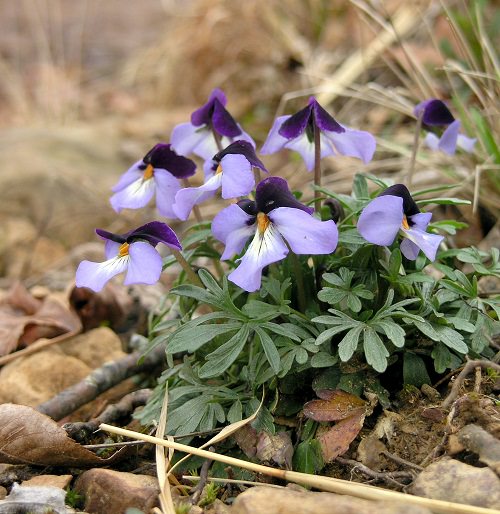
Botanical Name: Viola pedatifida
USDA Zones: 3-8
This one is a unique, stemless plant with bright purple flowers. It thrives well in bright sunlight and can also tolerate drought to some extent.
2. Wild Pansy

Botanical Name: Viola tricolor
USDA Zones: 4-9
Wild pansy shows off overlapping petals in purple, violet, or white color. It performs well in well-drained soil under semi-shade or no shade.
3. Northern Bog Violet
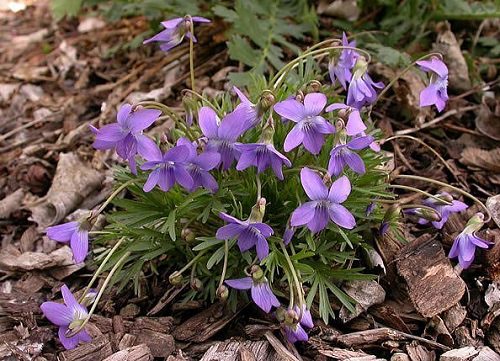
Botanical Name: Viola nephrophylla
USDA Zones: 6-8
The 5 petalled flowers of these plants are deep violet. It is also an endangered species and threatened in New Hampshire. It is one of the best types of violet flowers.
4. Early Blue Violet
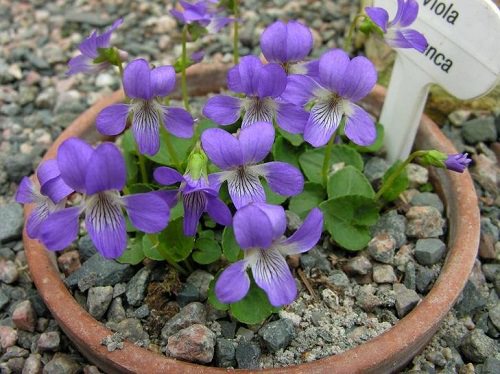
Botanical Name: Viola adunca
USDA Zones: 4-8
It is a compact plant with heart-shaped leaves. The flowers are deep violet with 5 petals each. This one is also listed as endangered. Both the leaves and flowers are edible.
5. Common Dog Violet

Botanical Name: Viola riviniana
USDA Zones: 4-8
Native to Africa, it is also famous as Wood Violet. The plant is a perennial and grows 5 petals and light purple flowers from April to June.
6. Florist’s Violet
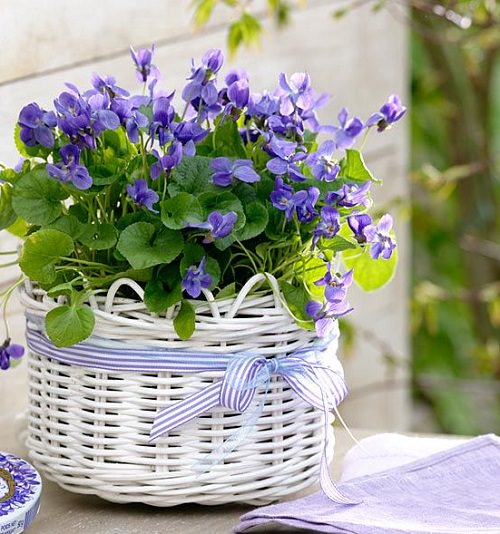
Botanical Name: Viola odorata
USDA Zones: 4-8
Growing scented, dark violet or white flowers, Florist’s Violet is famous for its sweet fragrance that’s used in many cosmetics and perfumes.


